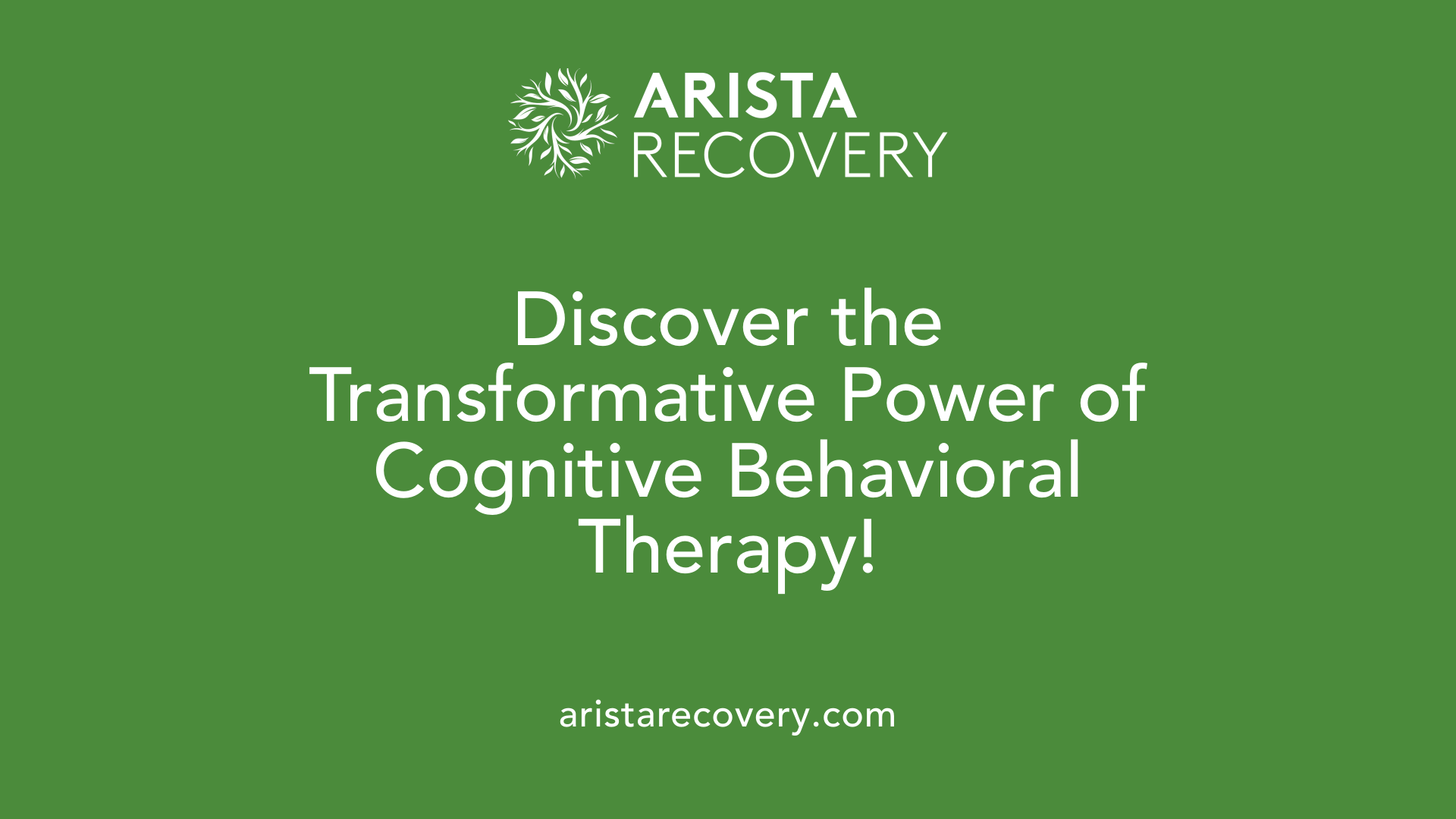How to Identify and Challenge Negative Thought Patterns

Understanding and Addressing Negative Thought Patterns
Negative thought patterns, often referred to as cognitive distortions, can significantly impact our mental well-being. These automatic and distorted thoughts can create a cycle of negative emotions and behaviors, leading to increased stress, anxiety, and even depression. By understanding common types of negative thinking and learning how to challenge and change these patterns, individuals can improve their mental health and achieve a more balanced perspective on life.
Identify Common Cognitive Distortions

What are the characteristics of negative thought patterns?
Negative thought patterns are commonly automatic and can manifest as distorted perceptions of reality. They are often unhelpful, leading individuals to believe these thoughts without question. Such thoughts can intrude into consciousness effortlessly and can drive negative behavior, affecting overall mental health.
Common Cognitive Distortions
All-or-Nothing Thinking
This distortion involves seeing situations strictly in black-and-white terms. For instance, an individual may believe they are either a total success or a complete failure, ignoring any middle ground.Overgeneralization
This is when one negative event is generalized to form a broader conclusion, like assuming ‘I always fail’ after one setback. This can reinforce low self-esteem and feelings of helplessness.Mental Filter
This occurs when someone focuses on a singular negative detail, overshadowing all the positive aspects of a situation. For instance, receiving mostly positive feedback, but fixating only on a single criticism.Jumping to Conclusions
This includes making assumptions without adequate evidence, such as mind reading—believing others are thinking negatively about you or practicing fortune telling by anticipating the worst outcomes.Personalization
This is when an individual attributes external negative events to themselves, feeling unnecessary guilt for something beyond their control.
Recognizing and challenging these cognitive distortions can pave the way for a more balanced perspective, ultimately improving mental health.
Breaking the Cycle of Negative Thinking Patterns

Cycle of Negative Thoughts
Negative thoughts often create a cyclical pattern, intensifying feelings of anxiety and discouragement. When a negative thought arises, it can trigger more negativity, leading to distorted beliefs about oneself and one's situation. This cycle not only affects mental health but can also impact daily behaviors, fostering a feeling of being stuck. It’s essential to identify these recurring thoughts to interrupt their negative influence.
Awareness and Reflection
Building awareness is the first step. Consider using techniques like cognitive diffusion, which separates thoughts from identity, helping alleviate their heavy influence. Keeping a thought record can assist in tracking negative thoughts, prompting reflection on their validity. This self-awareness allows individuals to challenge irrational beliefs and begin the process of restructuring them.
Triggers Leading to Negative Thinking
Common triggers include stress and fatigue, which may exacerbate negative thought patterns. It can be beneficial to recognize these stressors in daily life. Practicing mindfulness techniques, such as the ‘5-4-3-2-1’ grounding method, helps redirect focus to the present moment, reducing the likelihood of falling into negative loops. These strategies encourage a kinder self-dialogue, promoting self-compassion and breaking the cycle of negativity.
Effective Techniques to Break Negative Thought Patterns
To break negative thought patterns:
- Recognize and Challenge: Identify negative, distorted thoughts and assess their accuracy.
- Practice Mindfulness: Engage in meditation or yoga to center yourself in the present.
- Reframe Thoughts: Shift perspectives on negatives to find a balanced view.
- Positive Influences: Surround yourself with supportive individuals.
- Express Yourself: Utilize creative outlets to process thoughts and feelings effectively.
By actively employing these techniques, individuals can gradually dismantle negative thinking patterns, creating space for positive reflection and growth.
The Power of Cognitive Behavioral Therapy (CBT)

What are the principles of Cognitive Behavioral Therapy?
Cognitive Behavioral Therapy (CBT) is grounded in the understanding that our thoughts, feelings, and behaviors are interconnected. This therapy emphasizes identifying and challenging negative thought patterns to mitigate their impact on our emotions and actions.
CBT promotes an active engagement in self-reflection, allowing individuals to recognize cognitive distortions such as overgeneralization and all-or-nothing thinking. By addressing these erroneous beliefs, individuals can shift toward more balanced and realistic perspectives, reducing feelings of inadequacy and frustration.
How do CBT worksheets and exercises help?
CBT worksheets and exercises serve as practical tools in the process of cognitive restructuring. One notable resource is the 'Thoughts: A cognitive restructuring self-help guide'. This guide prompts users to assess the validity of their thoughts, differentiate between thoughts and facts, and combat common cognitive errors.
Key exercises include:
- Thought diaries: Track negative thoughts and analyze their validity.
- Thought challengers: Evaluate evidence supporting or opposing distressing thoughts.
- Cognitive reframing: Shift perspectives to foster a more positive outlook.
How does CBT help in challenging thoughts?
In CBT, individuals learn to challenge their negative thoughts through a structured approach. This involves techniques such as reality testing, which weighs evidence for and against distressing beliefs. Additionally, practicing self-compassion and engaging in mindfulness can assist individuals in separating their identity from these thoughts, reducing their influence.
For those seeking to challenge negative thoughts, you can find a wealth of resources, including PDFs and worksheets. These tools focus on cognitive restructuring and can guide your self-reflection. Furthermore, free online CBT courses may also provide supplementary strategies for enhancing mental well-being.
Techniques for Challenging and Reframing Negative Thoughts

How can I challenge negative thoughts effectively?
Challenging negative thoughts effectively requires a multi-faceted approach. It starts with recognition—acknowledge and observe the negative thought, labeling it to gain perspective and reduce its power. Techniques like cognitive distancing can be beneficial; for example, imagine ‘zooming out’ from the thought or creating mental folders to separate it from your emotions.
Next, reality testing comes into play. Evaluate the truth of these thoughts by examining evidence for and against them. This exercise often reveals gaps in reasoning and highlights the lack of solid proof behind negative assumptions. Replace the distorted thought with a more balanced and positive affirmation based on facts.
Lastly, incorporate self-compassion into your strategy. Approach yourself with the understanding and kindness that you would offer a friend. This practice can diminish harsh self-criticism and cultivate a more forgiving internal dialogue, making it easier to challenge unhelpful thoughts.
Employing these techniques helps reshape negative thinking patterns, thus contributing to improved mental health and well-being.
Mindfulness and Self-Compassion for Better Mental Health

How can I remove negative thoughts from my mind?
To effectively remove negative thoughts from your mind, it’s crucial to first recognize and label these thoughts as they arise. Understanding that negative thoughts may not accurately reflect reality is an essential step.
Techniques like cognitive restructuring allow you to challenge and reframe these negative beliefs into more positive perspectives. Mindfulness meditation, which focuses on present-moment awareness, can promote relaxation and help you detach from distressing thoughts, reducing anxiety and negativity. Incorporating deep breathing exercises can further enhance this sense of calm.
Engaging in journaling is another beneficial practice as it assists in bringing awareness to your thought patterns. Reflecting on your experiences can help identify triggers and negative tendencies. Additionally, gratitude practices encourage a shift in focus toward the positive aspects of your life, fostering a more optimistic outlook.
It's also important to consider therapies such as cognitive behavioral therapy (CBT) which can guide you in developing healthier thought patterns. Positive affirmations can reinforce self-worth and combat negativity.
By implementing these mindfulness and self-compassion strategies alongside structured exercises, you can cultivate a more resilient mindset, effectively reducing the prevalence of negative thoughts in your daily life.
The Impact of Excessive Negative Thinking on Well-being
Repetitive Negative Thinking (RNT)
Excessive negative thinking often manifests as Repetitive Negative Thinking (RNT), where individuals find themselves trapped in a cycle of worry and ruminative thoughts. This tendency results in a loop that exacerbates mental distress, hindering one's ability to cope with daily challenges effectively. Conditions such as anxiety, depression, and PTSD frequently accompany RNT, illustrating its significant impact on overall mental health.
Mental health disorders
The relationship between excessive negative thinking and mental health disorders is well-documented. Chronic negative thoughts can deepen feelings of depression and anxiety, potentially leading to physical health issues like hypertension and heart disease. This feedback loop of distress fosters a perception that the individual is unable to escape their negative mindset, culminating in a decline in quality of life.
Coping strategies
Recognizing the detrimental effects of excessive negative thinking is crucial for mental wellness. Effective strategies to manage these thoughts include:
- Cognitive Behavioral Therapy (CBT): This approach helps individuals identify distortions in their thought patterns and reframe them.
- Mindfulness practices: Engaging in mindfulness meditation can aid in observing thoughts without judgment, promoting acceptance.
- Self-compassion: Practicing kindness towards oneself can reduce harsh self-criticisms and improve emotional resilience.
By applying these coping strategies, individuals can work towards alleviating the hold negative thinking has on their lives.
Empowering Your Mind with Positive Change
Addressing negative thought patterns through awareness and intentional action can lead to significant improvements in mental well-being. By identifying cognitive distortions and employing strategies such as Cognitive Behavioral Therapy, mindfulness, and cognitive reframing, individuals can challenge and reshape their thinking patterns. Embracing these practices fosters resilience and promotes a more balanced, positive perspective on life, empowering individuals to navigate their lives with greater confidence and mental clarity.
References
- Identifying Negative Automatic Thought Patterns
- [PDF] TWENTY QUESTIONS TO HELP YOU CHALLENGE NEGATIVE ...
- Reframing unhelpful thoughts - Every Mind Matters - NHS
- Learning to Challenge Negative Thoughts - High Focus Centers
- 10 Common Negative Thinking Patterns and 5 Steps for Change: Blog
- Breaking the Cycle: Negative Thought Patterns and Depression
- 12 Ways to Recognise Negative Thoughts - Benevolent Health

